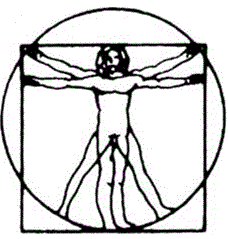Neurofeedback and ADHD
There are different subtypes of ADHD when it comes to symptoms and brainwave activity. One of the most common types consists of an excess of alpha wave activity (8-12 Hz) throughout the central and frontal areas of the brain, and this type of activity is associated with the daydreaming, distractible, inattentive ADHD. The second type consists of an excess of low frequencies in the frontal lobes, 4-7 Hz, or theta frequencies, and delta rhythms (1-4 Hz) may be present as well. These patterns are typical of those with ADHD combined type, or, the commonly known

inattentive and hyperactive type. Neurofeedback, training would include inhibiting slow wave frequencies (delta, theta, and alpha (2-12 Hz)) in the frontal lobe while rewarding the Sensory-Motor Rhythm (SMR) mid-beta (15-23 Hz).
Another difficulty frequently found in the brain of someone with ADHD is a deficit of Beta (15-20) or low-beta or SMR (12-15 Hz) in the sensory motor cortex. It is optimal for SMR to be functioning at 10 to 12 percent on the central strip of the brain, or the sensory motor cortex. The sensory-motor cortex runs from side to side across the middle of the brain and can most easily be described as being directly beneath the headpiece on a pair of headphones when placed over the ears. SMR training in this area of the brain is especially important for reducing distractibility and overstimulation from external stimuli. Training SMR at C4 is helpful in reducing physical hyperactivity while training C3 with a reference at C4 is helpful for reducing inattention. Also, high-beta and gamma brainwave activity, or 21 Hz and above, is problematic and can contribute to inattention, hyperactivity, and reduced ability to filter importance of outside stimuli.
If you’re struggling with symptoms of ADHD, call today to make an appointment to improve the quality of your life.
Conditions Improved by Neurofeedback
Articles and Research
-
Arns, M., Conners, C. K., & Kraemer, H. C. (2012). A Decade of EEG Theta/Beta Ratio Research in ADHD: A Meta-Analysis. Journal of Attention Disorders, 17(5), 374-383. doi:10.1177/1087054712460087
-
Fuchs, T., Birbaumer, N., Lutzenberger, W., Gruzelier, J. H., & Kaiser, J. (2003). Neurofeedback Treatment for Attention-Deficit/Hyperactivity Disorder in Children: A Comparison with Methylphenidate. Applied Psychophysiology and Biofeedback, 28(1), 1-12. doi:10.1023/a:1022353731579
